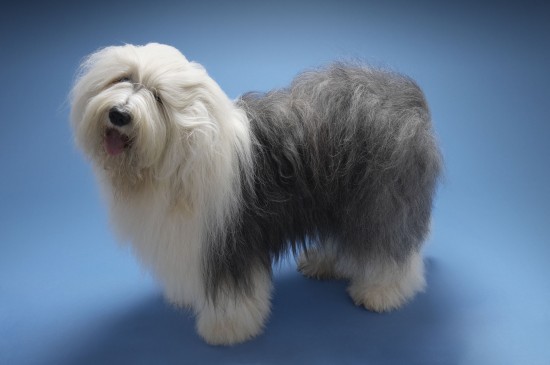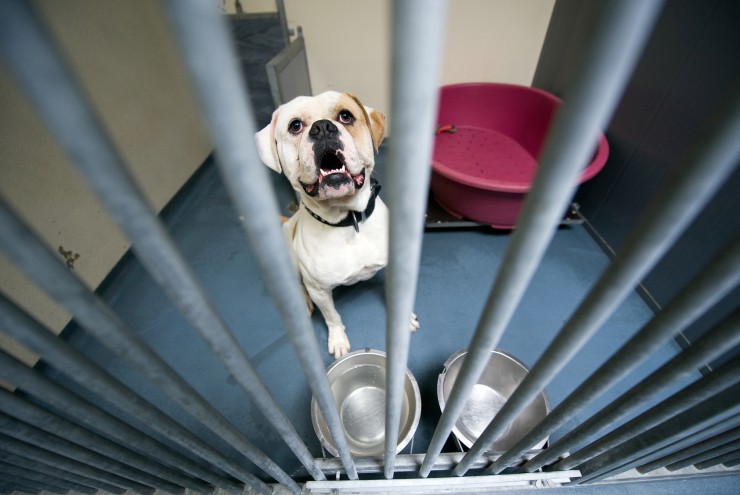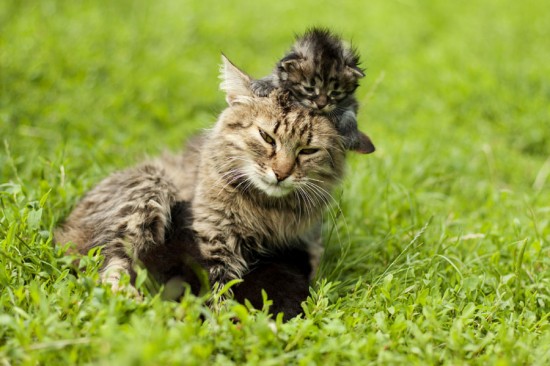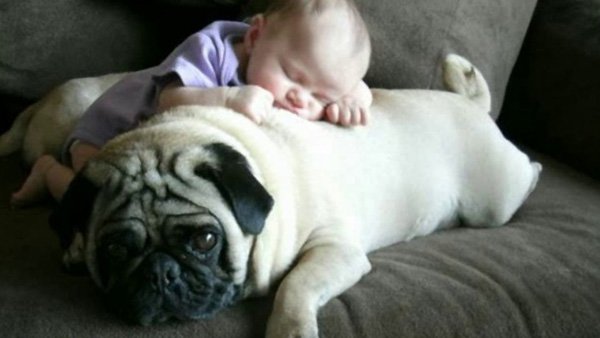
Most pet owners put as much thought and care into feeding our cat or dog as we do to feeding ourselves. Browse the pet food section of your local supermarket and you will see an incredibly large choice of cat and dog food to choose from, and there are even more options if you shop at a pet store.
The wording on pet food sold in the US is regulated by the Association of American Feed Control Officials. (AAFCO) Pet food manufacturers must list the ingredients by weight - with the first ingredient being the main one. The nutritional breakdown of fat, fiber and protein indicate that the food contains the minimum amount indicated and not necessarily the full amount.
The pet food industry is entirely self-regulated and there is nothing to prevent pet food companies from using poor quality ingredients. Consider buying name brand pet foods for your cat or dog. They may be priced slightly higher than the equivalent store brand - but premium pet foods generally have higher quality ingredients as well as contain added vitamins and antioxidants.
Try to choose pet food that suits the specific needs of your pet - your cat or dog will have different dietary needs as a puppy or kitten, than when full grown. You may find that you change your pet's food several times over the course of his or her life, especially if their health deteriorates.
You can buy pet food that is designed specifically for young or old pets, pets that are diabetic, lactating or pregnant - and even food designed for cats that have a problem with fur balls. There are cat and dog foods that are designed for the indoor or inactive pet. Never feed dog food to cats or cat food to dogs.
Perhaps your biggest decision will be whether to feed your pet dry or moist foods. There are advantages to each of these - and it doesn't hurt to vary your pet's diet by alternating between them. And if you are going to feed your pet the occasional treat, try to choose healthy treats - a surprising number of pet treats are unhealthy with a high fat content.
Cats have three basic types of food - dry, moist and canned food. Dry food - also known as kibble - has the advantage of staying fresh longer once it has been opened. It also tends to be the least expensive as well as the least tasty - if you have a finicky cat, he or she may not be enthusiastic about dry food. A cat eating only dry food will drink more water.
Moist cat food is similar to dry food, but is soft and chewy - most cats are able to easily eat this kind of food. Moist cat food has moisture content of around 35%, so if you are feeding your cat exclusively moist food, make sure that water is readily available. Once the food has been opened, it tends to dry out quickly and lose its taste.
Even the most finicky cat will eat and enjoy canned food. Canned food comes in an often overwhelming variety of flavors and the cost can vary, based on the content and quality of the meat. And cats that only eat canned food are getting plenty of water - most canned food has moisture content of around 75%.
Dog food also comes in the three basic types - dry, moist and canned. Dry food is less expensive, as well as being easier to buy in bulk and store. And dogs can benefit from a diet of dry food as it helps to reduce a build up of tartar and generally helps to exercise your dog's mouth muscles.
Moist foods for dogs can often contain a large amount of preservatives and artificial colors. They also tend to be high in sugar content and are not generally considered a good source of nutrition. Canned food tends to be better quality and actually contains real meat. An older dog or a dog with sore gums or having difficulty chewing should be fed canned food. However, canned food is costlier - especially when feeding a larger dog.
If you are changing the type of food your cat or dog eats, one effective method is to gradually mix in the new food with the old over a period of several days. On the first day, the serving should consist of ?old foods and ?new food, on the nest day ?and ?and so on, until your pet is eating just the new food.
Always discuss your pet's diet with your vet. It is worth taking the trouble to ensure that your cat or dog is not only enjoying mealtimes, but is being fed the right food too.
 Old English Sheepdog Hereditary Health And Health Testing
Old English Sheep
Old English Sheepdog Hereditary Health And Health Testing
Old English Sheep
 Seven Top Tips For Kennel Boarding A Dog That Suffers From Separation Anxiety
Seven Top Tips Fo
Seven Top Tips For Kennel Boarding A Dog That Suffers From Separation Anxiety
Seven Top Tips Fo
 Cat Or Kitten - Which One Is Right For You
Cat Or Kitten - W
Cat Or Kitten - Which One Is Right For You
Cat Or Kitten - W
 Do You Know Why Your Dog Does Certain Weird Things?
Do You Know Why Y
Do You Know Why Your Dog Does Certain Weird Things?
Do You Know Why Y
 Why Organic Foods are Good for Health of Dogs?
Why Organic Foods are Good for Health of Dogs?
Why Organic Foods are Good for Health of Dogs?
Why Organic Foods are Good for Health of Dogs?
Copyright © 2005-2016 Pet Information All Rights Reserved
Contact us: www162date@outlook.com